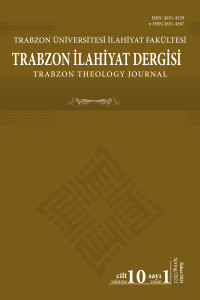Arapçada Cümle Kurulumuna Katılan Ana Unsurların Belâğî Yönden İncelenmesi
Examination of the Main Elements in Arabic Sentence Structure in Terms of Eloquence
Author(s): Zafer AkyüzSubject(s): Language studies, Syntax, Rhetoric
Published by: Karadeniz Teknik Üniversites - İlahiyat Fakültesi
Keywords: Arabic Language and Rhetoric; Sentence; İsnad; Musnadun ilayh; Musnad;
Summary/Abstract: There are three elements forming the basic structure of a sentence in Arabic. These are isnad, musnad, and musnadun ilayh. Isnad is the most important subject of “Belâgat” (science of rhetoric) out of the three parts foming “İlm-i Meani” (science of ma'ânî) . Isnad, which defines the relationship between musnad and musnadun ilayh, that is, between the subject and the predicate, forms the basis of “İlm-i Meani” as it focuses on relationship on interpretation of single expressions that form the composition and their reciprocal relations. The main elements of the sentence are called musnad ilayh and musnade umde, the elements of sentence besides these are called register or excess. The scholars of rhetoric have gathered the rhetorical isnad under three headings. These are the conditions of the haber-i isnad (verification of news), conditions of musnadun ilayh (conditions of the issue referred to) and the conditions of musnad (conditions of referral). As it is beyond the possbibility in the present study to examine the basic elements of the sentence in the science of rhetoric, isnad, musnadun ilayh and musnad from all perspectives, the dictionary and term meaning of isnad, isnad in terms of rhetoric, the states of isnad and musnadun ilayh and musnad hashif, dhikr, introduction, commentary etc. status are analyzed superficially.
Journal: Trabzon İlahiyat Dergisi
- Issue Year: 10/2023
- Issue No: 1
- Page Range: 279-305
- Page Count: 27
- Language: Turkish

